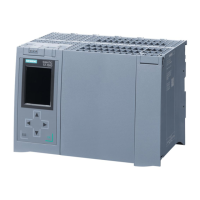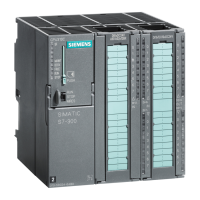Maintenance
14.5 Resetting CPUs to factory settings
S7-1500R/H redundant system
System Manual, 01/2024, A5E41814787-AF
469
4. Click the "Reset" button.
5. Click "OK" in response to the confirmation prompts.
Result: The CPU executes a "Reset to factory settings", during which time the RUN/STOP LED
flashes yellow. When the RUN/STOP LED lights up in yellow, the CPU has been reset to factory
settings and is in STOP. The "Reset to factory settings" event is entered in the diagnostics
buffer.
Result after resetting to factory settings
The table below gives an overview of the contents of the memory objects after the reset to
factory settings.
Table 14- 1 Result after resetting to factory settings
Actual values of the data blocks, instance data blocks
Bit memories, timers and counters
Retentive tags of technology objects
Entries in the diagnostics buffer (retentive area)
Entries in the diagnostics buffer (non-retentive area)
Depends on the procedure:
• Using mode switch: Is deleted
• Using display: Is deleted
• Using STEP 7: Depends on the setting of the
"Retain IP address"/"Delete IP address" option
buttons
Device name (module name)
Counter readings of the runtime meters
Set to "00:00:00, Jan. 01, 2012"
Resetting the CPU to the factory settings also deletes the IP address of the CPU and resets the
redundancy ID to 1. Please note the following:
-1500R/H redundant system that is already in operation is switched to the STOP system
state. If you reset the CPU with redundancy ID 2 to factory settings, that CPU is assigned the
IP address of the other CPU (with redundancy ID 1). This results in an IP address conflict. You
can only access the CPU with the emergency address. You can find information on the
emergency address in the section Backing up and restoring the CPU configuration (Page
421
).
Possible remedy: Using the display, assign the CPU the redundancy ID previously set. You can
then access the CPU over the original IP address again.

